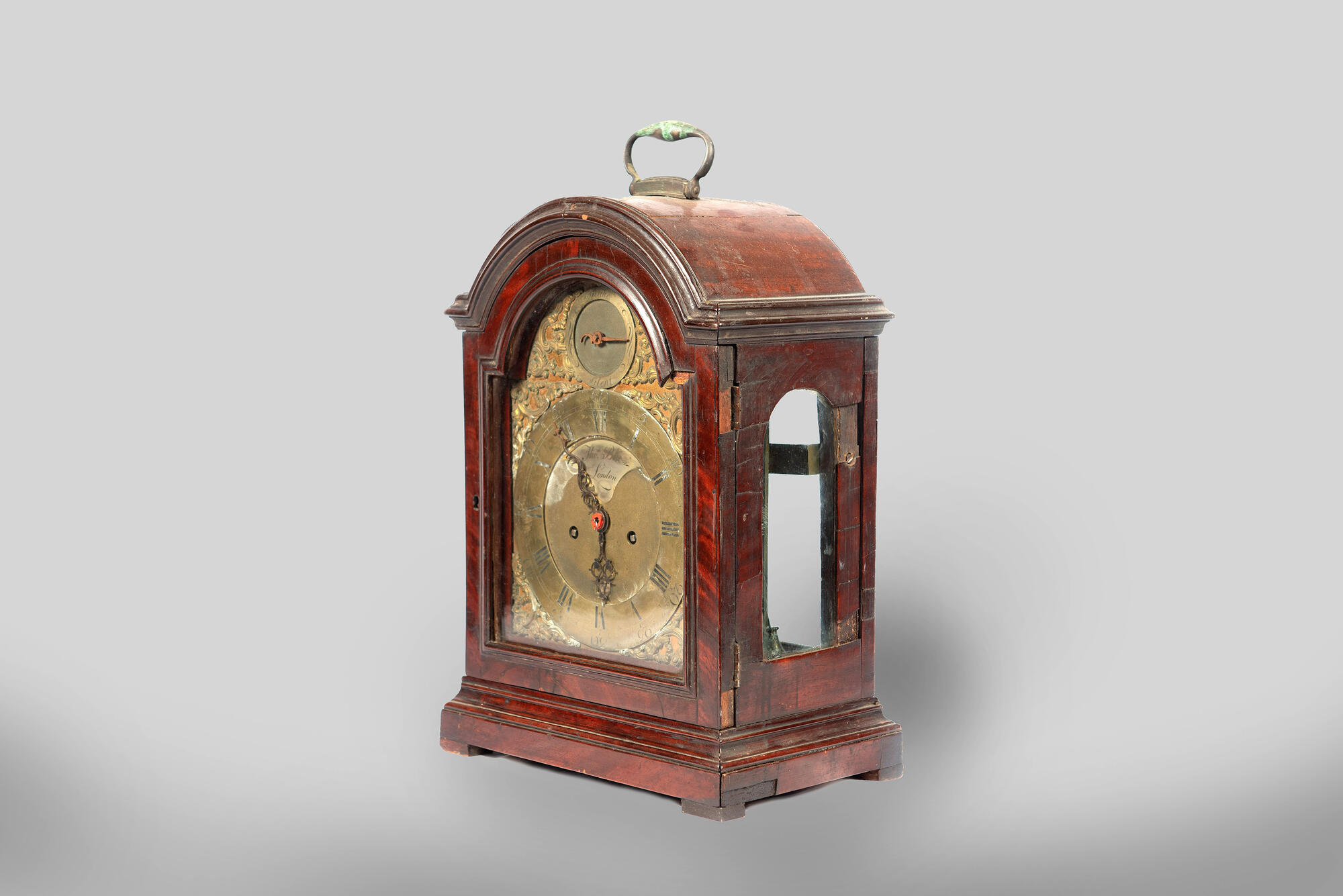English bracket clocks are often also called “cabinet clocks”. This is the most recognizable English clock, produced from the 17th to the mid-19th centuries. Originally, these clocks had a bracket for mounting them on the wall, which is why they got the name bracket clocks. In time, the name came to be used for any small clock that stood on shelves or furniture.
The clock, not fixed to the wall, could be moved from room to room as required. The common features of such clocks are a dial with decorative patterns; metal, wood, horn or tortoise shell inlays; a pediment and a decorative base. Some clocks have a carrying handle.
From around 1660, English watchmakers began to use springs in pendulum clocks. This allowed artisans to make the case much lower than that of a clock with a long, heavy pendulum, which required a tall case. The dial plates of English bracket clocks, which had arched form since the early 18th century, were decorated with cast bronze overlays with an openwork pattern in the form of plant scrolls, dolphins and vases.
The dial scale was a brass ring with engraved Roman numerals for the hours and Arabic numerals for the minutes, along which the openwork hands moved. The short hour hand had a bulky finish made up of varying thick scrolls, while the minute hand had a sharper, angular end with a small pattern in the center. The back plates of the movement were ornately engraved.
The clock, not fixed to the wall, could be moved from room to room as required. The common features of such clocks are a dial with decorative patterns; metal, wood, horn or tortoise shell inlays; a pediment and a decorative base. Some clocks have a carrying handle.
From around 1660, English watchmakers began to use springs in pendulum clocks. This allowed artisans to make the case much lower than that of a clock with a long, heavy pendulum, which required a tall case. The dial plates of English bracket clocks, which had arched form since the early 18th century, were decorated with cast bronze overlays with an openwork pattern in the form of plant scrolls, dolphins and vases.
The dial scale was a brass ring with engraved Roman numerals for the hours and Arabic numerals for the minutes, along which the openwork hands moved. The short hour hand had a bulky finish made up of varying thick scrolls, while the minute hand had a sharper, angular end with a small pattern in the center. The back plates of the movement were ornately engraved.










